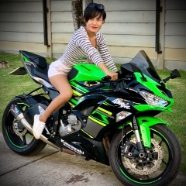Deadly Riots In Bangkok Let Local Photographers Shine In Top Photo Contest
-
Recently Browsing 0 members
- No registered users viewing this page.
Announcements
-
Topics
-
-
Popular Contributors
-
-
Latest posts...
-
42
-
33
Cars - Buying New Or Used in Thailand
A Chevrolet Cruze has reliability issues, particularly with the engine. Fine car? ROFL. The cheapest new car in Thailand is a Suzuki Celerio, manual gearbox, 319,000 baht. Like driving a pram. Perhaps you should post on threads where you know something, although you may find it quite limiting. -
2
Middle East UN Expert: Palestinian Statehood Mustn't Overshadow Gaza Crisis
After reading this, I concluded that the Australian Prime Minister had become a transsexual, which given his general Woke attitudes, wouldn’t have surprised me. I then realised that I’d carelessly skimmed the first 2 paragraphs of the article. -
30
Traffic Foreign Cyclist's Reckless Manoeuvre Sparks Outrage in Phuket
Unfortunately some farangs will have to learn the hard way that things here are not same as things back home. He got lucky this time. -
60
Tourism Strong Baht and Safety Fears Weigh on Thai Tourism
This Op is really a surprise. At the end of last month there was a story about how tourism was very bad compared to last year. Here it is. From January 1 to July 5, 2025, Thailand welcomed 16.8 million international tourists, a 5% decrease compared to the same period last year. Of these, 67.1% were from nearby markets, and 32.9% from long-haul markets. The number of tourists from nearby markets dropped by 12.20%, with East Asia seeing a significant decrease of 24.81%, mainly due to a slowdown in Chinese tourism. Meanwhile, long-haul markets have seen a positive increase of 14.88% compared to last year. https://www.nationthailand.com/news/tourism/40052350 So how can the baht be strong and tourism be so good if it is less than last years numbers? Someone has been playing the numbers game to keep the baht high. -
9
Report Man Arrested for Transporting Half-Tonne of Meth in Loei
I'd say mediocre, not bad, not great. As far as sex witches are greatly overrated.
-
-
Popular in The Pub








Recommended Posts
Create an account or sign in to comment
You need to be a member in order to leave a comment
Create an account
Sign up for a new account in our community. It's easy!
Register a new accountSign in
Already have an account? Sign in here.
Sign In Now